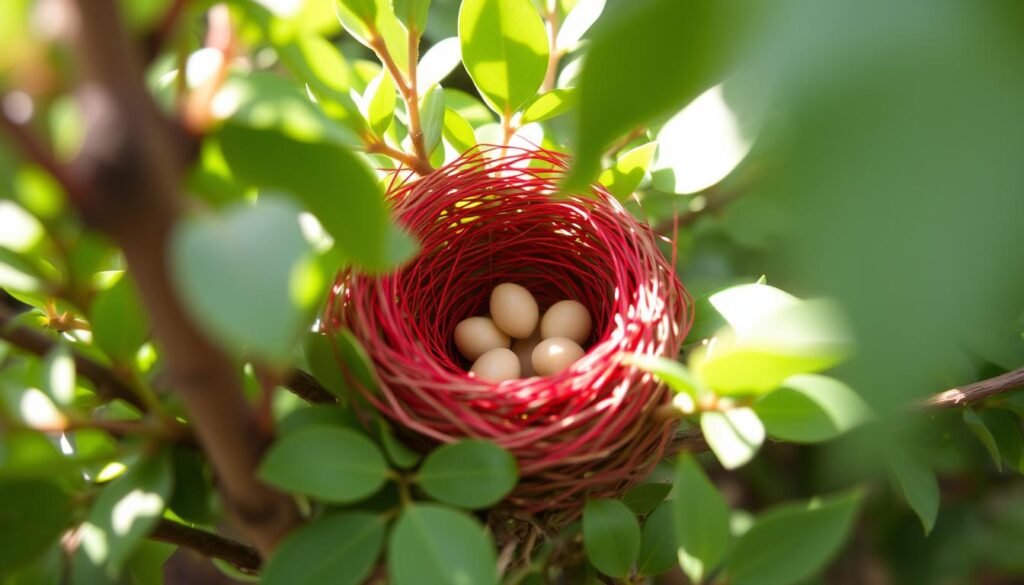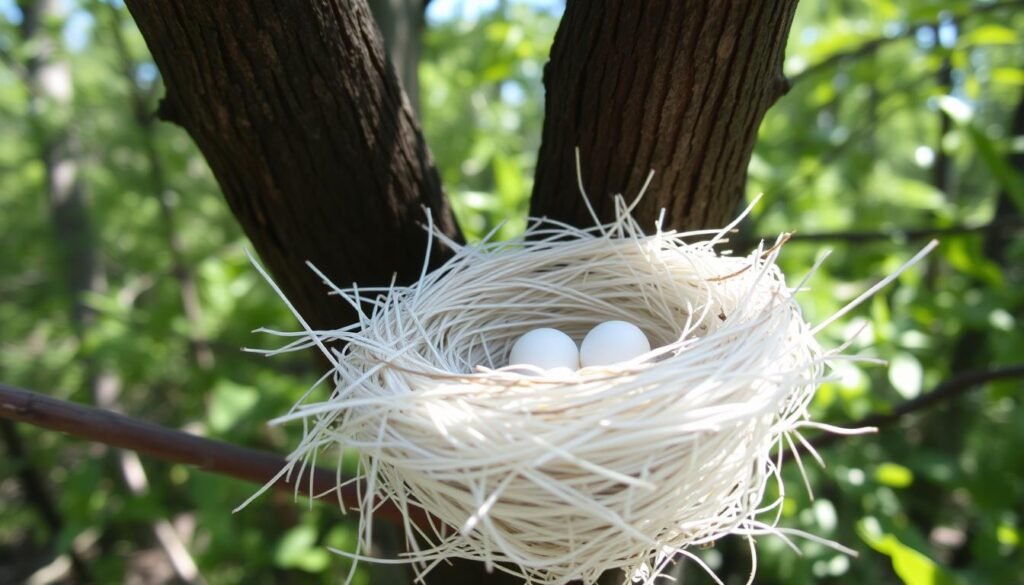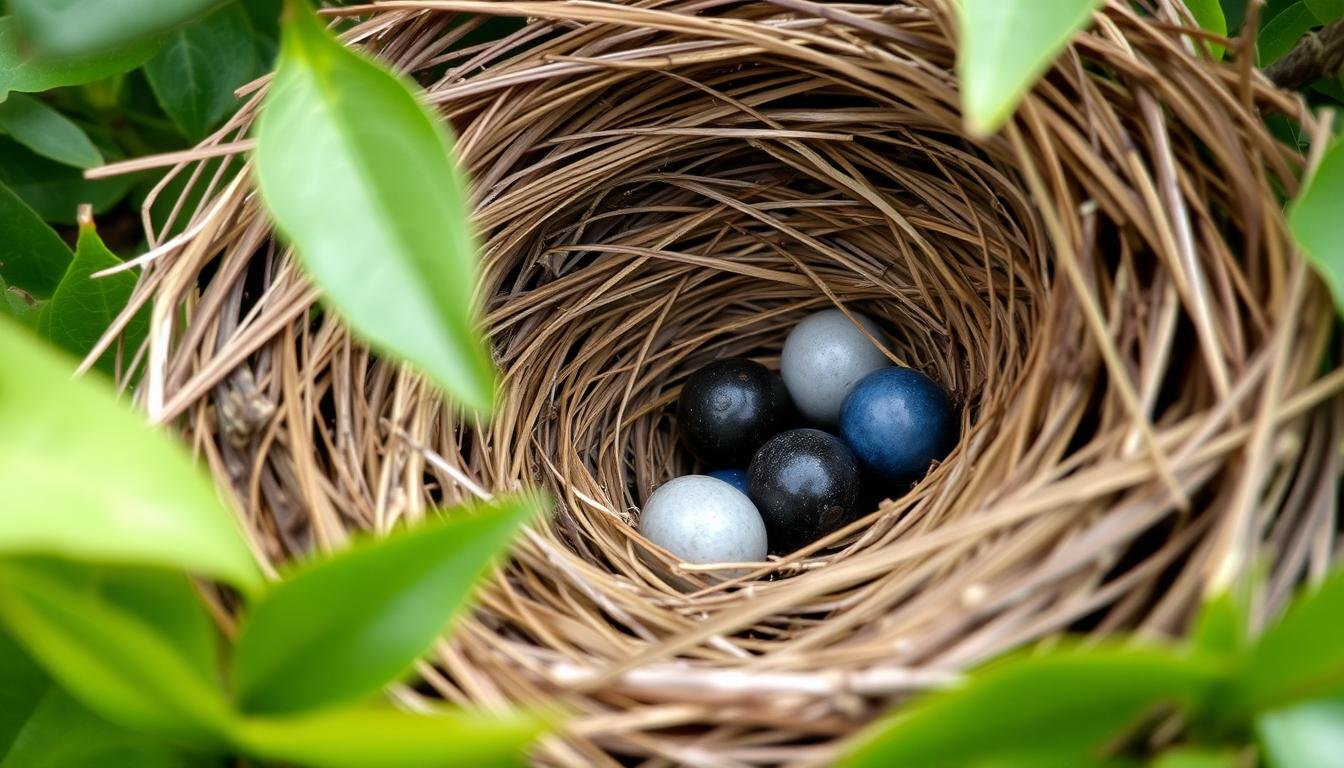Choosing a pure bird nest is key because of the risks from bleached products. A pure bird nest is a rare treat that’s good for us. But, a bleached bird nest can harm our health. It’s important to pick a pure bird nest without additives or bleach.
In the market, bleached bird nest products might look better. But, they’re not good for us. A pure bird nest, on the other hand, is natural and processed less. This means it keeps its health benefits. By choosing a pure bird nest, we get the real taste and health perks.
Key Takeaways
- Avoiding additives and bleach in bird nests is crucial for our health and well-being.
- A pure bird nest offers numerous health benefits and retains its nutritional value.
- Bleached bird nest products can be detrimental to our health and should be avoided.
- Opting for a pure bird nest ensures that we get a natural product with minimal processing.
- Choosing a pure bird nest over a bleached bird nest is essential for enjoying the authentic taste and benefits of this delicacy.
- Pure bird nest products are available in the market, and it’s essential to select a reputable supplier to ensure authenticity.
Understanding the World of Edible Bird's Nests
Edible bird’s nests are a rare and prized delicacy in many cultures. They are valued for their rarity and the hard work needed to harvest them. A clean nest is especially sought after for its quality and authenticity.
The value of these nests can change a lot. It depends on the bird type, where it’s found, and how it’s harvested.
The growing demand for red nest products has led to more nests being harvested. But, this has raised concerns about sustainability. Many producers are now using sustainable methods to harvest nests. This focuses on the birds’ welfare and the environment.
What Makes a Bird's Nest Valuable
A valuable bird’s nest comes from the wild, with little processing. These nests are made from bird saliva, which is full of protein and nutrients. Their rarity and the hard work to get them make them very sought after.
Natural vs Processed Nests
Natural nests are harvested from the wild with little cleaning. Processed nests, however, are cleaned and treated to last longer. While processed nests are easier to find, natural nests are seen as better quality and more authentic.

The Rise of Adulterated Products
The high demand for edible bird’s nests has led to fake products. These may be made from fake nests or heavily processed. To avoid these, look for clean nest products that are certified and come from sustainable sources.
| Type of Nest | Description | Value |
|---|---|---|
| Natural Nest | Harvested from the wild with minimal processing | High |
| Processed Nest | Cleaned and treated to extend shelf life | Medium |
| Adulterated Product | Made from fake or imitation nests | Low |
The Truth About Bleaching Processes in Bird's Nests
Bleaching bird nests is common in the industry. But, it’s key to know how it affects the nests. A bleached bird nest might look cleaner and more attractive. Yet, it can harm the nest’s quality and nutritional value.
Some makers of bird nests use bleach to clean them up. This can strip away the nest’s natural nutrients and benefits. It’s important to know the dangers of eating bleached bird nests. Instead, choose natural, unbleached nests.

When buying bird nests, check for “unbleached” or “natural” labels. This means the nest hasn’t been bleached. Opting for natural nests lets you enjoy their full nutritional benefits.
Here are some key points to consider when purchasing bird nests:
- Look for products labeled as “unbleached” or “natural”
- Avoid products that have been treated with chemicals or bleaching agents
- Choose reputable producers that prioritize the quality and nutritional value of their products
How to Identify Edible Bird Nests with Bleached or Additive Content
When buying edible bird nests, knowing about additives or bleaching is key. To make smart choices, look for signs of tampering or additives. Check if an additive for bird nest was used to improve looks or shelf life.
Visual Inspection Techniques
Visual checks can show if nests have been tampered with or have additives. Look for even colors, a too-clean look, or odd smells. These might mean an additive for bird nest or bleaching.
Texture and Consistency Tests
Testing texture and consistency can spot fake nests. Feel for hardness, an odd feel, or structure issues. These signs could point to an additive for bird nest or other unwanted stuff.
Common Red Flags
Watch out for nests that cost too little or look too perfect. These could mean an additive for bird nest or other bad stuff. Knowing these warning signs and doing visual and texture checks helps you buy better.
The Impact of Processing on Bird's Nest Quality
Processing methods greatly affect the quality of pure bird nest. The aim is to keep the nest natural while making it safe to eat. Minimal processing is best because it keeps the nest’s nutrients and texture intact. But, harsher methods can damage the nest, reducing its natural benefits.
It’s important to think about how processing affects the nest’s realness. A nest that’s processed carefully will keep its natural traits. But, a nest that’s heavily processed might lose its special qualities. Knowing about different processing methods helps you choose a high-quality nest.
- Minimal processing: This method involves gentle cleaning and drying to preserve the nest’s natural state.
- More invasive methods: These methods can include bleaching, additives, or other treatments that can compromise the nest’s quality.
Choosing a pure bird nest that’s been processed with care is key to its quality and authenticity. By understanding how processing affects bird’s nest quality, you can make better choices. This way, you can enjoy the natural benefits of this unique product.
The quality of a bird’s nest is not just about its appearance, but also about its nutritional value and texture. By choosing a pure bird nest that has been processed with care, consumers can experience the full benefits of this natural product.
Natural vs Artificial Cleaning Methods
There are two main ways to clean bird’s nests: natural and artificial. Keeping the nest clean is key for food safety. It stops harmful bacteria and germs from growing.
Traditional Cleaning Techniques
Traditional methods use natural stuff like water, salt, and vinegar. These are gentle and won’t hurt the nest. Here are some common ways:
- Soaking the nest in water to remove dirt and debris
- Using a soft brush to gently remove any remaining impurities
- Drying the nest in the sun or using a low-temperature oven
Modern Processing Methods
Modern methods use chemicals and machines. They’re quicker but can be rough on the nest. Also, chemicals can be bad for people’s health.
Environmental Impact Considerations
Think about the environment when choosing how to clean. Natural methods are better for the planet. They don’t use harsh chemicals or a lot of energy. But, modern methods can harm the environment a lot.
In short, a clean nest is vital for food safety. The cleaning method affects the environment too. Choosing natural methods helps the planet and supports green practices.
Understanding Common Additives and Preservatives
Many people worry about additives and preservatives in bird’s nests. Some makers add things to make the nest look better or last longer. But these extras can hurt food safety and the nest’s quality.
It’s key to read labels and know what each ingredient is. Here are some common ones to watch out for:
- Artificial coloring agents
- Preservatives to extend shelf life
- Flavor enhancers
Knowing about these additives lets us ask for better from makers. We can pick products that focus on food safety and quality. As more people want better bird’s nests, it’s important to be open and honest in the industry.
The best way to keep bird’s nests safe and good is to focus on food safety and honesty. By learning about common additives and preservatives, we can choose wisely. We support makers who care about the same things we do.
Health and Safety Concerns of Bleached Bird's Nests
Eating bleached bird nests can be harmful. The main worry is the risk of allergic reactions or stomach problems. This is because of the harsh chemicals used to bleach them.
Short-term Effects
These problems can be serious and need quick medical help. Also, eating bleached bird nests might lead to long-term health issues. This could include a higher chance of getting chronic diseases.
Long-term Health Implications
Long-term risks include a higher chance of cancer and breathing problems. It’s also a concern for other chronic diseases. It’s important to buy bird nests from trusted sources. These places should follow strict food safety rules.
Safety Standards and Regulations
Rules need to be strict to keep people safe from bleached bird nest dangers. This means checking bird nest farms and processing places often. They must follow food safety laws.
Keeping bleached bird nests safe is key to public health. Knowing the risks helps us make better food choices. This way, we can look after our health and well-being.
| Health Risks | Short-term Effects | Long-term Implications |
|---|---|---|
| Allergic Reactions | Digestive Issues | Increased Cancer Risk |
| Respiratory Problems | Immediate Medical Attention | Chronic Diseases |
Choosing Pure Bird's Nests: A Buyer's Guide
When you’re looking to buy a pure bird nest, there are key things to think about. A clean nest is not just about looks. It’s also important for keeping the nest fresh and of good quality.
Trusted Sources and Certifications
Seek out trusted sources and certifications. Look for bird nest farms or organizations known for their quality. These can ensure the nest is pure and clean.
Price vs Quality Considerations
Price is important, but it’s not everything. A higher price doesn’t always mean a better nest. Look at the nest’s origin, how it was made, and any certifications. A pure bird nest might cost more, but it’s worth it for its health benefits.
Storage and Preservation Tips
To keep your nest in top shape, proper storage and care are key. Keep it in an airtight container, away from sunlight and moisture. Freezing or refrigerating can also help keep it fresh.
By keeping these tips in mind, you can make a smart choice when buying a pure bird nest. Always choose a clean nest for the best quality.
- Check the nest’s origin and processing methods
- Look for certifications from reputable organizations
- Consider the price and quality of the nest
- Store the nest properly to maintain its freshness and quality
| Factor | Consideration |
|---|---|
| Origin | Reputable bird nest farms or organizations |
| Processing methods | No additives or bleach used |
| Certifications | Reputable organizations specializing in bird nest production |
Conclusion: Ensuring Your Bird's Nest Investment
Exploring the world of pure bird nests requires careful thought about your health and the environment. The quality and purity of these delicacies can greatly affect your well-being. Choosing pure bird nests without harmful additives or bleaching agents is key. This way, you enjoy the real taste and avoid food safety risks.
We’ve shown how crucial it is to know where and how bird’s nest is made. By picking nests from reliable suppliers with clear practices, you get the natural benefits you want. Always put your health and the environment first when making food choices.
FAQ
What makes a bird’s nest valuable?
Bird’s nests are rare and hard to get. They are made by swiftlets using their saliva. This makes them valuable and sought after.
What is the difference between natural and processed bird’s nests?
Natural nests come straight from the birds. They are not changed much. Processed nests are cleaned and treated, which can change their quality.
What are the effects of bleaching on bird’s nests?
Bleaching uses harsh chemicals to make nests white. But it can harm their natural benefits. It’s better to choose unbleached nests for your health.
How can I identify bird’s nests with bleached or additive content?
Look for nests that seem too clean or perfect. They might be bleached. Real nests feel sticky and natural. Be careful of nests that are too cheap or look too good to be true.
What are the common additives and preservatives used in bird’s nests?
Processed nests might have artificial colors, preservatives, and sweeteners. Always check the label for these. Choose nests without them for a natural product.
What are the potential health risks of consuming bleached bird’s nests?
Bleached nests can cause allergic reactions and stomach problems. They might also increase the risk of diseases like cancer. Always choose unbleached nests for your health.
How can I choose pure, high-quality bird’s nests as a consumer?
Look for nests from trusted sources and with quality certifications. Higher prices often mean better quality. Store them properly to keep them fresh.




